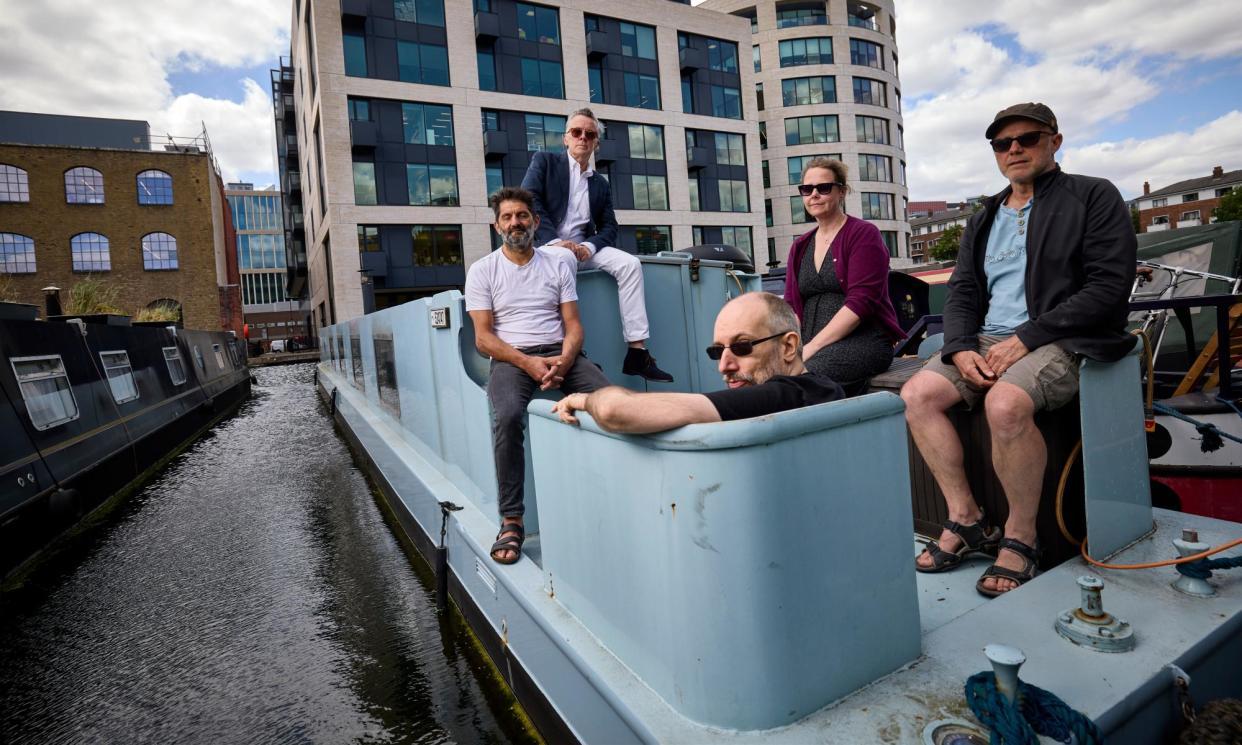London houseboat residents fear rise in mooring fees will price them out

Despite their low-cost, bohemian image, houseboats can cost a pretty penny and often rival the price of a property on land. Now, those living on rivers and canals in London fear they will be priced out of for good as soaring mooring fees threaten their way of life.
The Canal and River Trust (CRT) has raised mooring fees at some sites it owns by 10% for two years in a row. The Conservative government previously announced a £300m cut in funding to the trust, due from 2027. For many permanently moored in centrally located marinas, fees have shot up by thousands of pounds.
In Ice Wharf Marina, situated along Regent’s Canal in London near King’s Cross station, the annual mooring fees have risen by more than 50% in the past nine years. In 2015, residents could expect to pay about £8,850 for the year with a 10% early payment discount. Now the discount has been cut to 2% and residents face an annual bill of about £15,000.
Alexandra Lyons, a university researcher, lives on a houseboat in the marina with her 15-year-old daughter. She bought her boat for £180,000 but says that due to the soaring mooring rates she would be lucky to get £100,000 for it.
She previously owned a leasehold flat in Stamford Hill, north London, but sold it at a 30% loss after the building’s owner converted flats in the block into accommodation for prison leavers. “It descended into chaos and became really unsafe. They were threatening to kill my neighbour who was pregnant. It was a really difficult situation,” she said.
After selling her flat, Lyons said the only form of housing she could afford was a boat. “I’m using the money left over from the sale of my flat to pay fees to the trust. I feel like I’ve been sucked into a downward spiral,” she said.
Lyons had never lived on a boat before. “It seemed like a good option because it’s in central London. My daughter goes to school nearby and so it worked for us. It’s a lovely place to live, I have really nice neighbours and we all look out for each other.”
The fees are causing Lyons to burn through her savings. If costs continue as they are, she could have to either leave the capital or become a continuous cruiser – boaters who must move every two weeks, which the CRT does not recommend for those with children.
“I love living in London. It’s where I’ve lived for years and years and years,” she said.
The trust told the Guardian that post-election it would seek to renew its partnership with the government to “ensure canals receive the future funding needed to continue to play their vital role in helping tackle some key societal challenges”.
Richard Morgan, 51, a former lawyer, has lived all over London. “In those places, I never really had a sense of community. If you were lucky, you knew the people living next to you. Living [at Ice Wharf] is the first time I’ve felt a real sense of community,” he said.
His 10-year-old son, who has Down’s syndrome, visits him during the week. The prospect of moving would be incredibly disruptive to the boy. “He wouldn’t understand. This is his home and this is his community. They also look after him,” Morgan said.
Related: Fee hikes will price us out of canals, say houseboaters in England and Wales
Due to the increased fees there has been a rise in wealthy “part-timers” moving to the marina, people who live there for two or three days a week for work but own another property elsewhere, which residents say reflects how unaffordable living there has become.
One resident, who did not want to be named, is out of work. He said his entire universal credit payment, including housing benefit and money for living costs combined, no longer covered his mooring fees.
“We used to have a lot more younger people, key workers. They could never afford to live here now,” he said.
A CRT spokesperson said: “As the largest charity responsible for historic canals across England and Wales, all the income we receive is spent helping to keep them open, safe and navigable … We would be failing in our duties if we didn’t charge market rates to help raise the money needed.
“We own a small fraction of the moorings on the canal network, with the rest owned privately. We know that the cost of living has increased for everyone and our welfare team supports boaters who are struggling wherever we can.
“The cost of looking after canals continues to rise and only around 20% of the cost of keeping canals open and navigable comes from boaters, with the remaining 80% (around £150m per year) coming from other sources of income – notably over £85m from our investment and commercial income, including utilities and water sales.”

 Yahoo News
Yahoo News 
